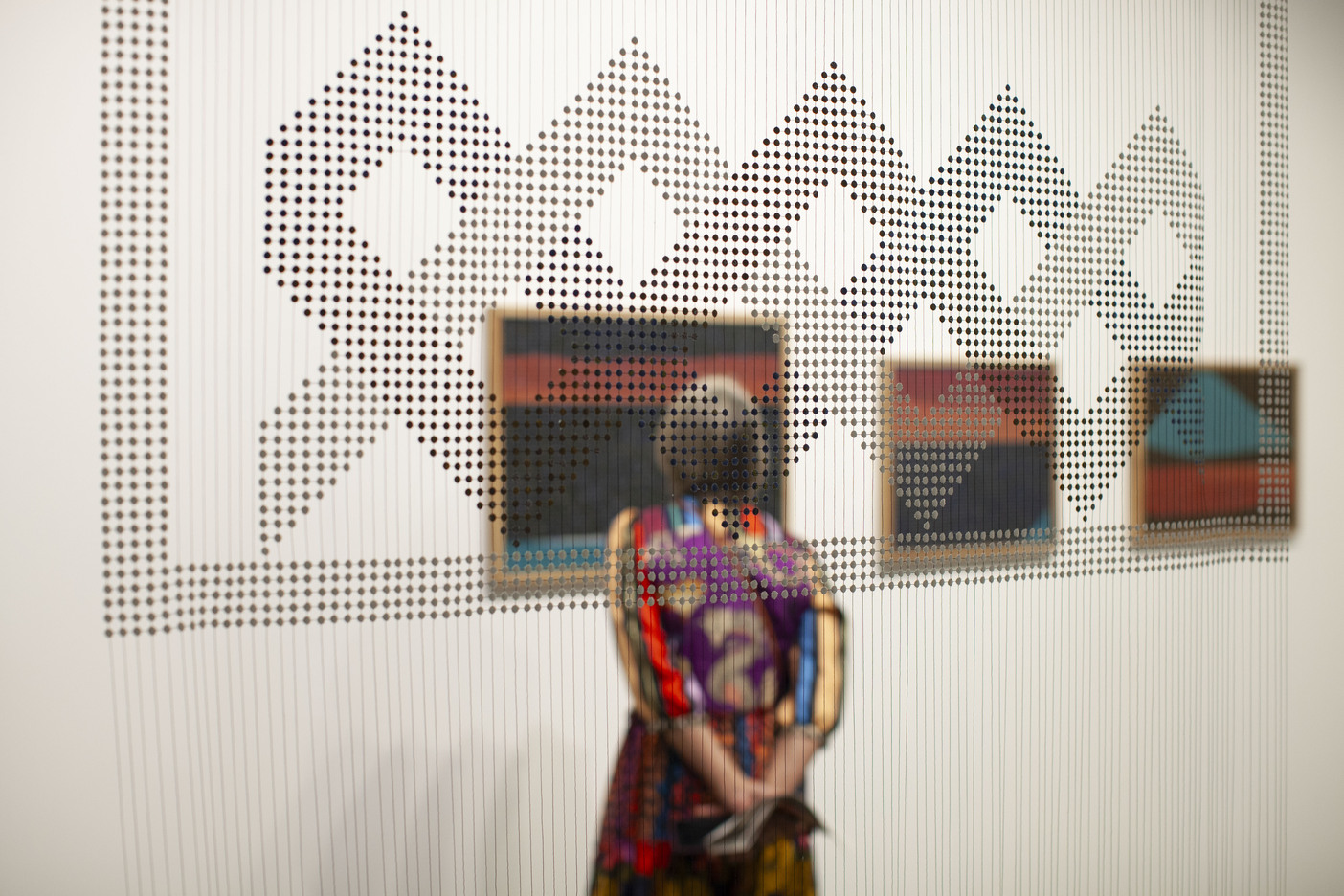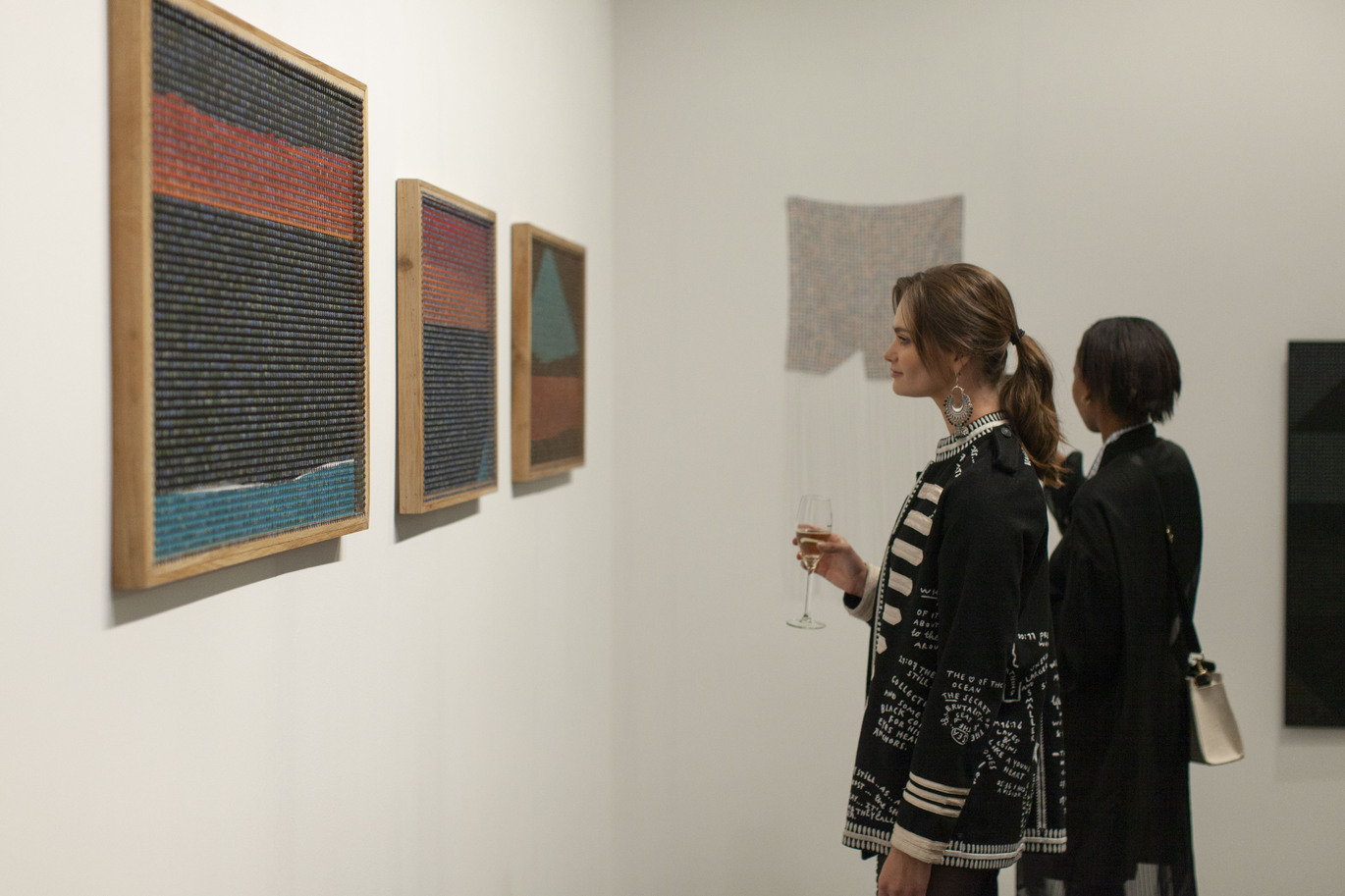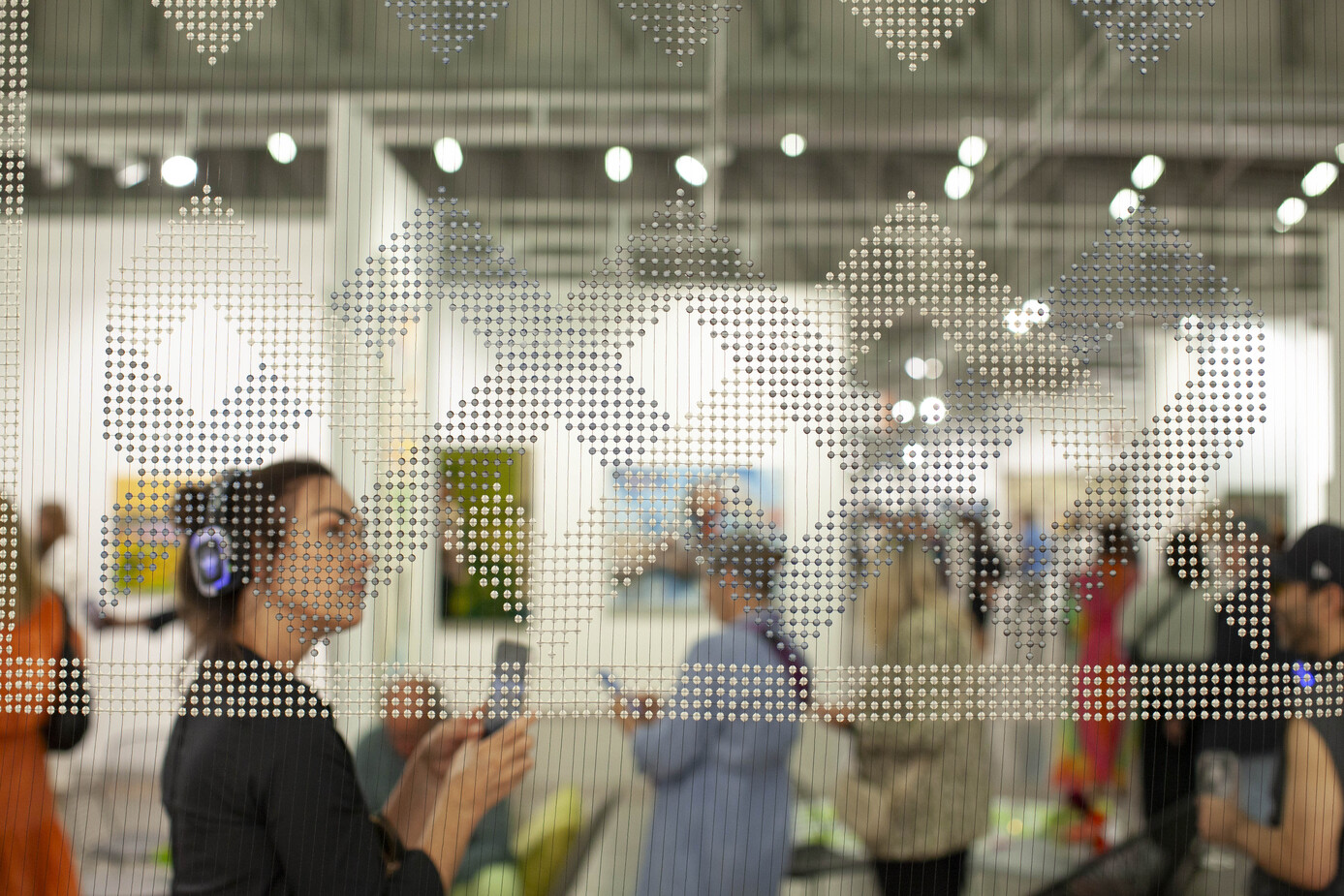The start of art week had an air of obvious serendipity to it. Upon settling into my seat on the plane, I took out a book on curatorial practice, making my seatmate ask if I was of the arts. The book went unread, replaced by the discourse spanning the two-hour flight from Johannesburg to Cape Town. We geeked over art, spirituality, NFTs, virtual realities and multidimensionalities of being.
The Investec Cape Town Art Fair hosted its 11th edition as Africa’s largest art fair from 16-18 February 2024. They presented a new theme: Unbound. Accompanying the theme were the questions: What does it mean to be unbound? How can the experience of art liberate the mind? Is it the role of the fair to make liberations of the mind accessible through art? And what does it mean to bind or unbind it from this expectation?


In the interest of advocating for beauty, I will share reflections on what I loved observing and engaging. I have to admit, I was refreshed by a general decline in figuration and black portraiture this year. In the absence, was a quiet resurgence of striking photographic works that explored themes of intimacy, materiality and negotiations of space.
I was captivated by a graduate of the Muholi Art Institute; Lulu Mhlana’s whose series of monochromatic images portray queer love in the intimate space. Even though the influence of Dr Zanele Muholi is palpable, Mhlana is expanding on the archive by capturing the intricacies of the intimate space. As a consequence of some of the images being slightly overexposed, a sense of airiness arises, evoking feelings of warmth, safety and love.
GENERATIONS was my favourite section at the fair, owing to the congruent pairing of works and artists, coupled with considered spatial design. Curated by Amogelang Moledu and Natasha Becker, this new section housed cross-generational dialogue between 10 African contemporary artists. The dialogue explored the non-linearity of time, idiosyncrasies of artistic practice, lineage-based referencing and material impositions for art making.
Beneath the site specificity of GENERATIONS, lie under-documented intergenerational intimacies between artists. These intimacies thread themselves through practice, medium, subject matter, the material, mentorship and collaboration. A personal highlight was the geometric flow between the works of Dr Esther Mahlangu and Bonolo Kavula. Though their works vastly differ in medium, their practice speaks to an echoing impulse to probe at materialities of heritage and lineage while contextualising their work within a global art economy.


The dialogue foregrounded the active manifestations of mathematics, science and perfectionism within the frameworking of African Aesthetics. In Mahlangu’s booth, we saw large-scale acrylic paintings on canvas, screen prints and ikhamba-shaped GRPs on plinths; one had traditional Ndebele patterns, while the other balanced patterns, landscapes with Ndebele women wearing multicoloured blankets and heavy beading painted in acrylic.
In the short film within the Esther Mahlangu retrospective, which opened at the Iziko South African National Gallery on Sunday, she candidly shares “In the beginning your family will help you paint your Cathane. They will come and check if your lines are straight or shaky, if they are not straight, they’ll know that your family didn’t teach you well. What made me want to be good was that I didn’t want to be laughed at by my in-laws. I had to know how.” In the interest of validating diversities of learning modalities, perfectionism and other faculties of education harnessed during transference practices within African sciences should have formal considerations. From this, the legacy of Dr Mahlangu’s success can find a frame outside the narrative that she reached international acclaim with ‘no formal training’.
Equally meticulous and married to the principles of mathematics, Bonolo Kavula’s practice involves deconstructing shweshwe fabric by punching it into tiny discs and glueing them onto threaded strands. She relies on repetition and precision to create sculptural artworks and hanging dynamic tapestries that create optical illusions and soft shadows. Upon finding out that her works would be in conversation with Dr Mahlangu, Kavula created layered paintings with line work at the surface, adding her signature tiny discs on the outer edge of the frame.
In this, she inserts herself in conversations of material histories through shweshwe which has global roots but has been appropriated by many African ethnicities. In addition to the curatorial approach moving beyond discourse, the works archive experimental reimaginings of inherited appropriations and inherited indigenous legacies between generations.





















































